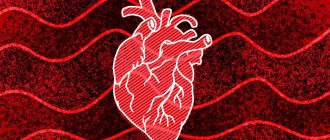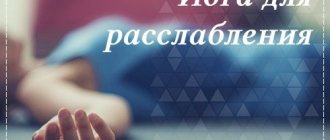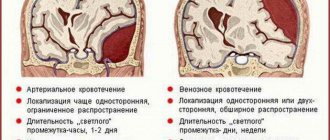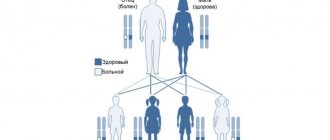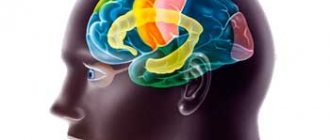Initially, the holotropic breathing technique was considered by some to be a real breakthrough in psychology, while others considered it a good alternative to LSD (the most famous psychedelic). But today among scientists this practice is considered one of the most powerful types of psychocorrection.
- What is this
- History of appearance
- Harm or benefit Proponents of the holotropic method
- What opponents of the technique say
- Basic principles
- What is rebirthing (origins of the technique)
Holotropic Breathwork – what is it?
One of the types of psychotherapy aimed at working with a person’s personal growth is holotropic breathing. Special breathing techniques are usually performed to music. With their help, a person triggers various chemical reactions in the body, which affects the activity of the nervous system. Holotropic breathwork was developed by American psychologist Stanislav Grof in the 50s. Thanks to research, this technique has been approved as an alternative method to psychotropic drugs.
Features of the technology
As a psychotherapeutic technique, holotropic practice has several features:
- During practice, the opening of psychological trauma occurs in groups, which are formed by memories of similar cases. For example, several similar situations when some kind of fear was experienced. As a result, the session does not work on a single case, but on a whole chain of similar ones. Since therapy is carried out on several injuries, it gives a result that is visible faster.
- “The inner wisdom of the body,” is what Stanislav Grof called this feature. This natural ability lies in the fact that the choice of groups of psychological traumas for processing is controlled by the psyche of the practitioner. As a rule, this is a relevant experience at a given stage of life, but a painful experience from the past.
- What makes it unique from other psychotherapeutic practices is the ability to identify traumas from a very early age and even those that occurred in the womb.
Read similar: Breathing yoga
Holotropic breathing allows you to work with large groups of similar traumas, including those that appeared in early childhood and before birth, while the choice of the direction of work is made by the psyche of the practitioner.
Holotropic Breathwork – pros and cons
The presented technology, like medications and physical procedures, has positive and negative sides. The benefits of holotropic breathing can be obtained if it is used by a healthy person, taking into account contraindications and characteristics of the activity. With proper application of the technique, existing psychological problems can be overcome. Correct breathing gives you a chance to penetrate into the depths of consciousness. It is recommended to use special breathing after completing special courses.
The harms and benefits of holotropic breathing are a topic that causes a lot of controversy, so there are also opponents of this practice. They argue that a person performing breathing exercises provokes temporary suffocation of the brain, which leads to the death of nerve endings. After one session, a loss of carbon dioxide occurs, which can lead to dizziness and loss of consciousness. If the technique is performed incorrectly, dangerous consequences can occur.
Contraindications for use
Despite the large number of advantages, the described breathing system has some contraindications . Before you start performing breathing exercises, it is worth finding out whether there are any contraindications for doing them.
Each person who seeks to undergo a course of these breathing sessions should familiarize himself with the list of main contraindications or diseases in the presence of which to engage in holotropic therapy.
Here are the most basic pathologies and important points that will not allow this therapy:
- angina pectoris, heart failure, hypertension, asthma. Exercise with these diseases can lead to death;
- pregnancy, as there is a risk of fetal death;
- epilepsy, so there is a risk of experiencing an increase in seizures from the emotions received;
- postoperative period or injury. Intense exercise may cause sutures to rupture;
- acute stage of infectious diseases;
- children up to 14 years of age.
There are quite a lot of diseases for which holotropic breathing exercises are strictly prohibited..
Before starting the course, it is worth visiting a doctor who will give recommendations on whether or not you can engage in this method of self-development.
Holotropic Breathwork – Technique at Home
Traditionally, classes are conducted in groups under the supervision of a specialist, but people who are confident in their abilities can study independently at home. Training should be carried out in a comfortable and spacious room. It is important that there is a person nearby who will monitor the progress of the lesson. It is not recommended to eat before starting the practice. During training, it is allowed to change the position of the body, as the consciousness dictates. Self-mastered holotropic breathing technique involves the correct selection of music:
- First, light music should be played to stimulate breathing.
- For 20 sec. the melody should change to a more stimulating one.
- For the next 20 sec. It is recommended to choose ethnic music that includes drumming.
- To enter a trance, it is better to switch to a dramatic composition, which should become calmer and more relaxing over time.
Holotropic breathing - how to breathe correctly?
The average duration of one lesson is approximately three hours. Breathing is carried out only through the mouth, and it is rhythmic. Do not interrupt your breathing and use the following principle: intense inhalation and relaxed exhalation. Correct holotropic breathing involves the upper chest. To concentrate, you need to throw away all thoughts and be sure to close your eyes. There are several important nuances that are worth considering:
- If you experience discomfort during exercise, you need to imagine that when you exhale, the negative goes away, and when you inhale, goodness fills its place. This will help you not get lost.
- If you need to quickly get out of a trance, you need to switch to dog breathing, which will prevent the emergence of negativity.
- When relaxation is achieved using Holotropic Breathwork, take deep breaths in and out through your nose.
Holotropic breathing. A new approach to self-exploration and therapy (Stanislav Grof, 2010)
2. The therapeutic potential of music
In the practice of Holotropic Breathwork, the mind-expanding effect of rapid breathing is further enhanced by the use of evocative music. Like breathing, instrumental music and other forms of sound technology—drumming, rattles, and chants—have been used for centuries or even millennia as primary tools in shamanic practices, healing rituals, and rites of passage in many parts of the world. Quite independently of each other, many pre-industrial cultures developed drumming rhythms that have been shown to have a marked effect on the electrical activity of the brain in Western laboratory experiments (Jilrk 1974; Neher 1961, 1962; Kamiya 1969; Maxfield 1990, 1994). The archives of cultural anthropology contain countless examples of extremely powerful trance-inducing techniques that combine music, percussion, human voices, and bodily movements.
Many cultures have used music specifically for healing in the context of complex ceremonies. The healing rituals of the Navajo Indians, performed by specially trained singers, were extremely complex - their complexity was compared to the complexity of the scores of Wagner's operas. The trance dance of the Kung Bushmen of Africa's Kalahari Desert has extraordinary healing powers, as has been documented in many anthropological studies and films (Lee & DeVore 1976; Katz 1976). The healing potential of syncretic religious rituals from Caribbean and South American cultures, such as Cuban Santeria
or Brazilian
Umbanda
is recognized by many specialists from countries with traditional Western medical education. In addition, amazing cases of emotional and psychosomatic healing have been described at the meetings of Christian groups using music, singing and dance, such as the Snake Handlers (Men of the Holy Spirit) and the "revivalists", or members of the Church of Pentecost.
Some spiritual traditions have developed sound technologies that not only induce a general state of trance, but also have a specific effect on consciousness, the human psyche and body. Thus, Indian teachings describe special connections between certain sound frequencies and individual chakras. The systematic use of this knowledge makes it possible to influence the state of consciousness in a predictable and desired way. It is said that the ancient Indian tradition of nada yoga,
or
“the path to unity through sound”[11]
can support, improve and restore emotional, psychosomatic and physical health and well-being.
According to the ancient Indian text Swara Shastra,
singing certain chants with full dedication and correct pronunciation can influence the energy channels in the subtle body
(nadis
and
chakras)
and have a positive effect on the flow of vital energy and blood circulation.
Representatives of the Raga Chikitsa (“healing with raga”)
claim that certain ragas can be used to treat certain diseases -
Pahadi Raga
has a positive effect on respiratory diseases,
Raga Chandrakauns
on heart diseases,
Raga Bhupali
and
Raga Todi
can reduce high blood pressure. blood pressure, and
Raga Asawari,
on the contrary, can increase low blood pressure.
Examples of unusual vocal performances used for ritual, spiritual and healing purposes include the polyphonic singing of Tibetan monks of the Gyotso sect and Mongolian and Tuvan shamans, Hindu bhajans
and
kirtans,
the chants of the Santo Daime
(Icaros)
used in ayahuasca ceremonies, the throat singing of the Eskimos, or the sacred chants of various Sufi orders. These are just a few examples of the widespread use of instrumental music and chants for healing, ritual and spiritual purposes.
Carefully selected music serves several important functions in holotropic states of consciousness. It mobilizes emotions associated with repressed memories, brings them to the surface and facilitates their expression. It helps open the door to the unconscious, enhances and deepens the healing process, and provides a meaningful context for the experience. A continuous flow of music creates a carrier wave that helps a person go through difficult experiences and dead ends, overcome psychological defenses, humble himself and surrender to the process. In Holotropic Breathwork sessions, which are usually conducted in groups, music has an additional important function: it masks the noise created by the participants and merges with them into a complex aesthetic form.
To use music as a catalyst for deep self-exploration and experiential work requires learning a new way of listening to and relating to music that is foreign to our culture. We often use music as a background sound that has little emotional meaning. Typical examples include the use of popular music at cocktail parties or the broadcasting of music in retail and industrial premises. Another approach used by sophisticated listeners is disciplined and attentive listening to music in theaters and concert halls. The dynamic and spontaneous way of using the musical characteristics of rock concerts is somewhat closer to the use of music in Holotropic Breathwork. However, the attention of participants in such events is usually directed outward, and their experience lacks the element necessary for holotropic self-exploration or therapy - continuous, focused introspection.
When working with holotropic states of consciousness, it is important to surrender completely to the flow of the music, allow it to resonate throughout your body and respond to it in a spontaneous and elemental way. This includes manifestations that would be unthinkable in a concert hall, where even crying and coughing are perceived as disturbances and cause irritation and awkwardness. In Holotropic Breathwork, a person must fully express whatever the music evokes, be it loud screaming or laughter, baby talk, animal sounds, shamanic chants or glossolalia. It is also important not to restrain any physical impulses, such as eccentric grimacing, sensual movements of the pelvis, violent trembling or strong contortions of the whole body. Naturally, there are exceptions to this rule: destructive behavior directed at oneself, others or the physical environment is unacceptable.
We also recommend that participants refrain from any intellectual activity, such as trying to guess the author of the music or the culture from which it comes. Other ways of avoiding the emotional impact of music involve the listener drawing on his or her professional expertise—judging the quality of the orchestra's performance, making assumptions about what instruments are playing, and criticizing the technical quality of the recording or the room's musical equipment. When we manage to avoid these pitfalls, music can become a very powerful tool for inducing and supporting holotropic states of consciousness. For this purpose, the music must be of superior technical quality and sufficient volume to stimulate the experience. The combination of music with accelerated breathing has an amazing activating effect on the psyche and the ability to expand consciousness.
The basic principles of using music in Holotropic Breathwork and the criteria for selecting specific works for different stages of sessions were formulated by Christina. Her father was a musician, and music formed an important part of her life from a very early age; she inherited from her father an ear for music and a deep interest in this universal language. If you use breathwork without music, the experience follows a natural trajectory, reminiscent of an orgasm curve; the intensity of emotions and physical feelings increases, reaching a climax, and then gradually fades away, even if the person continues to breathe rapidly. This provides a guiding principle for selecting music for sessions.
The general rule for choosing music is to respond sensitively to the phase, intensity and content of the participants' experiences, rather than attempting to program them in any way. This is consistent with the overall philosophy of Holotropic Breathwork - a deep respect for the wisdom of the inner healer, the collective unconscious and the autonomy and spontaneity of the healing process. This principle is easy to apply when conducting private breathing sessions. In group sessions, the participants' experiences, in terms of their nature and timing of stages, follow different individual patterns. Here the choice of music cannot be made individual; The best thing to do is to choose pieces that reflect and support the overall emotional atmosphere in the room.
Over the years, Christina has collected a large collection of recordings of music from different parts of the world. They cover a wide range of genres, from lesser-known classical works, religious music, film scores and good electronic pieces to selections from shamanic and ethnic music. She likes to stay in touch with the group during sessions and be sensitive to the energy in the room, even if that means playing just one tape or CD at a time. Many of the facilitators who have completed our training have changed this practice and use pre-recorded music collections. This approach is not ideal, as the dynamics change from session to session. Having pre-recorded music for an entire session makes it difficult to select pieces that reflect ongoing changes in the emotional atmosphere in the room. However, this practice has become very popular because it saves facilitators the effort and money needed to create their own extensive collections and frees them up to work with participants during the session.
With regard to the specific choice of musical works, we will outline only general principles and give some advice based on our own experience. We prefer to use stereophonic music that is evocative, has a steady rhythm and volume, and has no gaps between parts. We try to avoid harsh and disharmonious passages that provoke anxiety. We also discourage the use of songs and other vocal works sung in languages that participants understand, as their verbal content may convey a specific message or suggest a specific theme. When we play vocal compositions, we prefer those performed in foreign languages, so that the human voice is perceived as just another musical instrument. For the same reason, we try to avoid well-known works, such as the wedding marches of Wagner or Mendelssohn-Bartholdy, or the overtures to Bizet's Carmen or Verdi's Aida, since they may evoke specific intellectual associations or program the content of the session.
The session typically begins with activating music that is dynamic, fluid, and emotionally uplifting and encouraging. As the session continues, the music gradually becomes louder and turns into powerful rhythmic compositions - works by contemporary composers, little-known classical works, or recordings of ethnic, ritual and spiritual music from different cultures of the world. About an hour and a half into a Holotropic Breathwork session, when the experience usually reaches its climax, we introduce what we call “peak” or “breakthrough” music. These can be examples of sacred music - masses, oratorios, requiems or Sufi dhikrs, powerful orchestral works or excerpts of music from dramatic films. In the second half of the session, the intensity of the music gradually decreases, and we introduce uplifting or emotionally touching pieces (“music for the heart”). Finally, during the final period of the session, the music has a calming, flowing, timeless and meditative quality.
When choosing music for a session, we try to provide a wide range of styles, instruments and genres, and find a good balance between masculine and feminine parts. Soft and mellifluous music is especially important in the final stages of the session; it facilitates integration and positive closure of the experience. In holotropic states of consciousness, people are extremely sensitive to music and tend to prefer natural sounds - human voices or the sounds of musical instruments played by people. Electronic music can sound cold and artificial unless it has rich higher harmonics, which make it sound less technical. Of particular interest to Holotropic Breathwork are compositions that combine a fast percussive rhythm and long melodic sounds. This gives breathers the opportunity to focus on the aspect of the music that best reflects the nature of their experience - activity and struggle, or movement towards relaxation and opening.
Just as important as the choice of music is the quality of the music equipment. When planning a breathwork workshop, we must be sure to have a high-quality amplifier, a set of speakers, two CD players or tape recorders, and a mixer. This makes it possible to play our chosen works with sufficient volume and high sound quality, achieving a smooth transition from one part of the music to another. Ideally, it is also desirable to have a backup set of equipment that could be used in the event of a technical failure. Music is an essential component of the Holotropic Breathwork experience. A workshop leader's ability to select the right music will often determine whether a session will be a deeply meaningful or even life-transforming experience, or a frustrating waste of time.
Holotropic Breathwork for Depression
Numerous practitioners have proven that the presented technique gives a quick therapeutic effect, so in a couple of hours you can reduce anxiety levels, get rid of phobias and stress. Holotropic breathing is used for neuroses, depression, post-traumatic stress disorders, panic attacks, asthma, vegetative-vascular dystonia and other problems. Regular exercise makes a person mentally flexible, stress-resistant, collected and holistic. The effect is achieved by increasing the level of oxygen in the blood.
Holotropic breathing for weight loss
Scientists have proven that oxygen promotes fat burning and also speeds up metabolism. Holotropic breathing has a cleansing effect, since decay products pass into the lungs, from where they come out, leaving the body. The benefit is due to the fact that during vigorous inhalations and exhalations, muscle contraction occurs, which provides a full massage. This has a positive effect on the state of the digestive and excretory systems. With regular training, you strengthen your abs, improve your posture and lose extra pounds.
Holotropic breathing for astral travel
There are several ways to visit the astral world. Holotropic breathing also helps to enter the astral plane. In order to try this for yourself, you need to select and turn on the music. Allow the vibrations to penetrate your body and focus on your own inhalations and exhalations. You cannot be distracted by extraneous thoughts and program yourself to certain emotions. Use the rules described above. Holotropic breathing at home is implemented according to the following scheme:
- 5-10 min. light music for warming up;
- 5-10 min. rhythmic composition;
- 10-20 min. drums and hard rock;
- music for relaxation.
Holotropic Breathwork and Orthodoxy
The Church is categorical about such practices, calling them demonic. It is believed that using holotropic breathwork, a person falls under the influence of fallen angels and identifies himself with absolute consciousness, and this is the demonic space. As a result of accepting experiences, people conducting sessions will sooner or later come to spiritual and physical destruction. The clergy believe that using the method of holotropic breathing, a person claims to be equal to God, having received new knowledge and opportunities.
Holotropic breathing – contraindications
All techniques that affect humans can cause harm if existing contraindications are not taken into account. It is important to know why holotropic breathing is dangerous; it cannot be used for glaucoma, epilepsy, osteoporosis, pregnancy and acute infectious diseases. Sessions are contraindicated if there are severe chronic diseases, serious psychotic conditions and after recent operations. Before conducting sessions, it is recommended to consult a doctor.
What is this
Holotropic breathing is a way of exploring oneself, a psychotherapeutic technique based on rapid breathing. The technique is recognized as one of the best breathing techniques of our time (there is also rebirthing, vibration, free breathing).
Check out the Anuloma Viloma breathing practice.
Holotropic Breathwork – Negative Consequences
There are scientists who believe that this trend should be treated as an ambiguous phenomenon, and it is subject to significant criticism. One of the most common opinions indicates that specialists in this area influence a person by skillfully manipulating him. The negative consequences of holotropic breathing are associated with the fact that when using this technique, hyperventilation of the brain occurs, and this leads to the leaching of carbon dioxide and the death of nerve cells. As a result, classes do not develop the brain, but worsen its functioning.
How does this happen?
A holotropic breathing session is carried out in pairs. In each pair, one is the breathing “holonaut”, and the second is the “sitter” helping him. Then the roles are reversed, and the one who was the holonaut becomes the sitter and vice versa. The leader oversees the group and warms it up. A qualified psychotherapist should act as a facilitator, on which the effectiveness of the session and its safety largely depend.
The holonaut begins to breathe deeply and frequently, while stimulating music sounds in the background. The depth and frequency of breathing are purely individual, so everyone in a group who breathes differs in these parameters. No recommendations on breathing techniques are given, which means that the person breathing must determine how to breathe, based on their own sensations. The role of the sitter and facilitator at this stage is reduced to observation and if something goes wrong, for example, the holonaut has lost self-control, feels afraid or asks for help, the sitter must ask the psychotherapist to intervene in the process.
As the session progresses and the breathers fall into a state of trance, the dynamics of the music increase, it becomes dramatic, and eventually reaches a climactic breakthrough. Then the dynamics and drama of the musical accompaniment decrease, the melody becomes calm and promotes meditation.
Often, if, according to the feelings of the holonaut and the opinion of the leader, the process turns out to be incomplete, special exercises are carried out with the help of the sitter, the purpose of which is to focus on the experienced state.
To highlight the most important sensations, understand their meaning, as well as to consolidate the experience gained as a result of holotropic breathing, at the end of the session, the holonaut draws mandalas - drawings in the execution of which technique has no meaning, and the leading one is the process of creativity and the transfer of subjective non-verbal experience on paper in the form of completely material images.
Sharing, a group discussion of holotropic experience, is also carried out for the same purposes.


